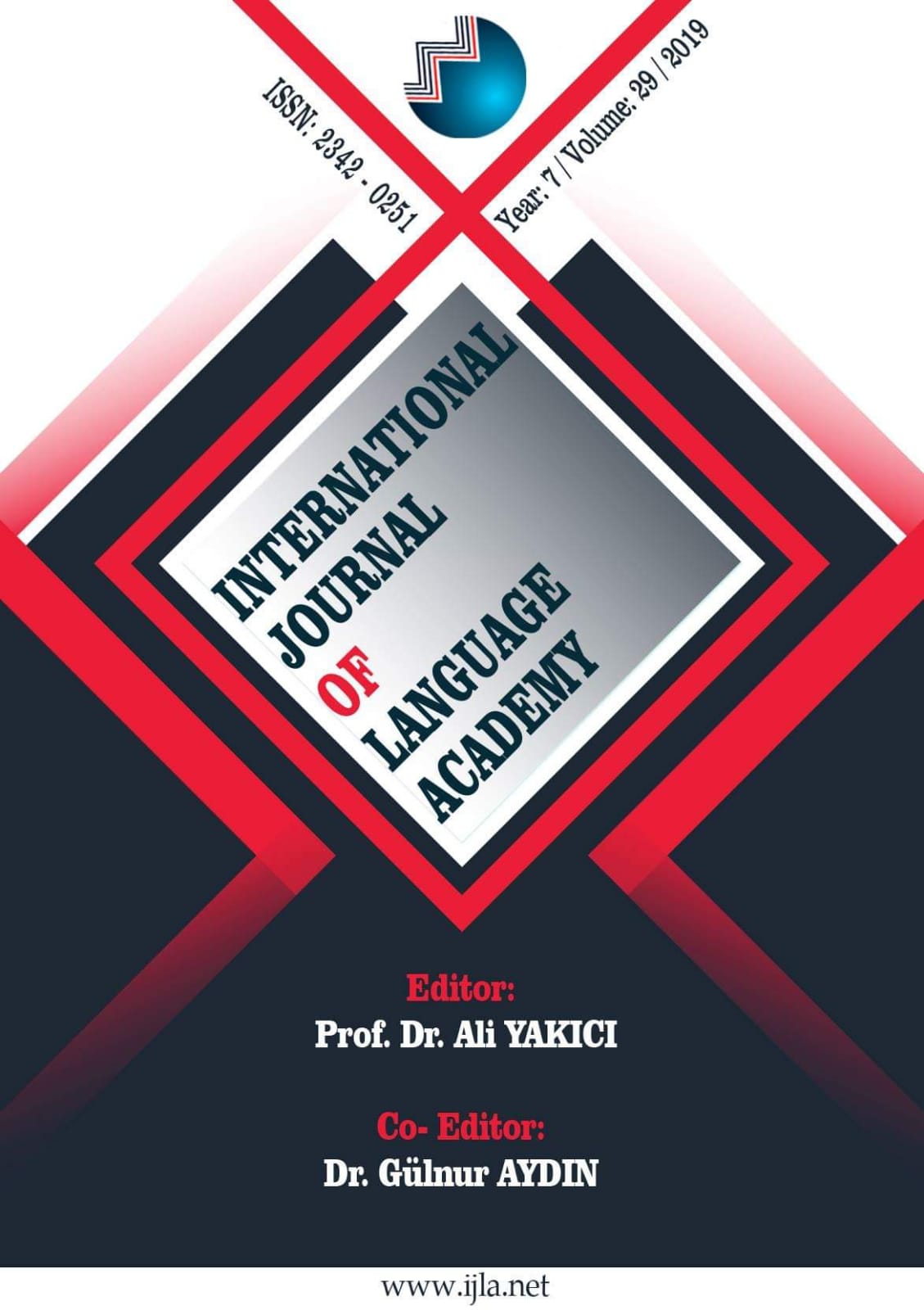Dini veya Seküler Düşünce Okullarında ve Kurgusal Metinlerde Kadınların Baskılanması ve Efemineleştirilmesi
Author :
Abstract
Mevcut olan bu çalışma, kadınların tarihsel süreç içinde nasıl “efeminenleştirildiğini” eleştirel bir şekilde incelemektedir. Konuyu derinlemesine incelemek için yazar, onları kıyaslayan iki perspektifi yanyana koymaktadır. Bu perspektiflerden biri dini olmakla diğeri de sekülerdir. Diyakronik olarak kadınları kullanmada ve baskılamada hangi perspektifin daha ağır bastığını keşfetmek için dünyadaki iki ana dini, “feminenleşmiş” kadınlara sahip olan iki etkili faktör olarak alıntılanmıştır. İki dinin kutsal kitapları olan İncil ve Kuran’dan somut örnekleri yanyana koyup atıfta bulunarak kıyaslama yaparken yazar hangi dinin kadınlara karşı acımasız bir şekilde daha sömürücü ve baskıcı olduğunu ayrıntılandırarak kanıtlandırmaya çaba göstermiştir. Konuya açıklık getiren örnekler sunulduğunda yazar bilim ve kanun gibi bütün yönleriyle kadınların güç kazanmasına göz açtırmamak için sözü edilen dinlerin mevki sahibi kişiler tarafından kullanılan adil olmayan yöntemleri okuyucuların kendilerinin araştırıp öğrenmesine imkân vermeye çalışmıştır. Makalede tartışılacak diğer bir ayrıntı da kadınların yararına yönelik hizmet eden daha hoşgörülü ve gelişimsel bir faktör olarak görülen sekülerlikten başka bir şey değildir. Kutsal kitaplar olan Kuran ve İncil’e ek olarak, Renklerden Mor ve Geniş, Geniş Bir Deniz romanlarından eleştirel analizlerle birlikte ünlü ve başarılı modern kadın aktivistlerin alıntıları da dinin, kadınları “efeminenleştiren”, ve baskılayanen önemli aygıt olduğunu ortaya koymaktadır.
Keywords
Abstract
The current paper is critically scrutinizing how females have been womanized in the course of the history. To further delve into this issue, the author juxtaposes two perspectives comparing them. One of the perspectives is religious and the other perspective is secular. In order to discover which perspective is weightier in terms of suppressing and exploiting women diachronically, two main religions in the world are cited as two influential factors to have womanized females. While making comparisons through juxtaposing both referring to tangible examples from the two religions’ holy books, Bible and Quran, the author has endeavored to further evidence which religion has been tyrannically more suppressive and exploitative to women. When clarifying examples are presented, the author has tried to let the readership themselves search out the unjust know-hows utilized by the dignitaries of the debated religions to crack down women’s acquisition of power in all aspects such as science and legislation. The other offshoot to be discussed in the article is nothing but the secular one which has been considered as a more lenient and developmental factor working towards the benefits of women in comparison with the former one, religion. In addition to the holy books of Quran and Bible, quotes from the renowned and prolific contemporary women activists together with the critical analyses of the two novels of The Color Purple and Wide Sargasso Sea lay bare that religion is the most significant apparatus to have womanized, and suppressed females.
Keywords
- Ali, K. (2016). Sexual ethics and IslamSexual Ethics and Islam: Feminist Reflections on Qur'an, Hadith and Jurisprudence 2nd edition, London: Oneworld Publications.
- Anwar, Z. (2009). Wanted. Equality and Justice in the Muslim Family. 2nd edition, Selangor, Malaysia: Musawah.
- Bewley, A. (1999). Islam, the empowering of women 1st edition, London: Ta-Ha Publications.
- Blyth, I. and Sellers, S. (2004). Hélène Cixous. 1st edition, New York: London: Continuum.
- Borland, J. (1991). Women in the Life and Teachings of Jesus. In Digitalcommons liberty. Repéré 16. Retrieved from http://digitalcommons.liberty.edu/cgi/viewcontent.cgi
- Buckley, R. A. (2017). Why Gender Inequality Is a Christian Issue. (2018, January 05). Retrieved June 29, 2019, from https://relevantmagazine.com/god/faith/whygender-inequality-is-a-christian-issue
- Cixous, H. and Sellers, S. (1994). The Héle ̀ne Cixous reader. 1st edition, New York: Routledge.
- Godzich, W. and Schulte-Sasse, J. (1986). The Newly Born Woman. In Theory and History of Literature Vol.24, 40-44. Minneapolis: University of Minnesota Press.
- Hansen, L. D. (2007). Christian in public: Aims, methodologies and issues in public theology. Stellenbosch: SUN Press. doi:0.18820/9781920109363
- Irigaray, L. (1993). Sexes and genealogies. Columbia University Press.
- Mernissi, F. (1987). Male-Female Dynamics in modern Muslim Society 1st edition. Bloomington: Indiana University Press.
- Mernissi, F. (1991). The Veil and the Male Elite: A Feminist Interpretation of Women’s Rights in Islam. Choice Reviews Online, 29(06), 34-65. Munir, L. Z. (1998). Islamic Fundamentalism and its Impact on Women. p. 3. London: Zed Books.
- Mulvey, L. (1991). Visual Pleasure and Narrative Cinema. p. 432-433. In An Anthology of Literary Theory and Criticism. Robyn R. Warhol and Diane Price Herndl. New Brunswick: Rutgers University Press.
- Naoual, E. (2016). American Muslim Women Convert's and the Reinterpretation of Islam: a study of American Women Converts' Writings.(L.C. University, Dü.) Center for Studies and Research about Women.
- Panaioli, P. (2017). The Postmodern Woman's Condition and Catholicism: Feminism or feminisms? The Journal Of Turk-Islam World Social Studies, 14(14), 444-446. doi:10.16989/tidsad.1402
- Rhys, J. (1982). Wide Sargasso Sea. USA: Castle House Norton & Company Inc.
- Stanton, E. C., Anthony, S. B., & Gordon, A. D. (1997). The selected papers of Elizabeth Cady Stanton and Susan B. Anthony (Vol. 3), 463. New Brunswick, N.J: Rutgers University Press.
- Wadud, A. (2000). American Muslim Women Converts and the Reinterpretation of Islam: A Study of American Women Converts' Writings. Loyola: Chicago University.
- Wadud, A. (1999). Qur’an and Woman: Reading The Sacred Text from a Women’s Perspective. New York: Oxford University Press.
- Walker, A. (2003). The Color Purple. USA: Harvest Edition Print.
- Williams, D. T. (2011). He is the image and glory of God, but woman. Unveiling the understanding of the imago Dei: General. Scriptura, 108(0), 318. doi:10.7833/108-5
